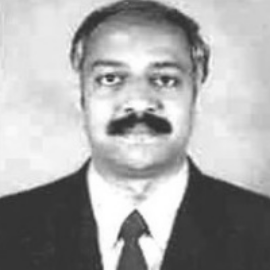
M. N. Sree Rangaraju
Work place: E&C, BIT, Bengaluru, India
E-mail: mnsrr@rediffmail.com
Website:
Research Interests: Wireless Communication Technologies
Biography
Dr. M. N. SreeRangaraju received BE Degree in 1985 from Bangalore University and MTech in 1991 from University of Mysore both in Electronics Engineering, and PhD (Telecommunication Engg) from VMU, Salem, TN, India in 2011.Professor of Electronics and Communication Engineering at Bangalore Institute of Technology (BIT), Bengaluru, India has been in Teaching UG and PG Students of Electronics and Telecommunication Engineering students for nearly Thirty Years. He has organized several National level conferences and workshops in this tenure. He has published his Research papers in Prestigious IEEE Conferences held in USA, China, Malaysia and Egypt. He also has served has Session Chair for several National and International Conferences held in India and aboard. He also has served as editor of several journals and Magazine. He holds life member of ISTE, MVLSI, and IMAPS and also member of IEEE. His research interests include mobile and wireless communications and networks, personnel communication services and high-speed communication routing protocols and wireless channel modeling.
Author Articles
Cooperative MAC Protocol based on Best Data Rate (CMAC-DR)
By Nagesh R. M. N. Sree Rangaraju N. R. Kushar Gowda Vinayak Shekharappa Antin
DOI: https://doi.org/10.5815/ijcnis.2024.03.03, Pub. Date: 8 Jun. 2024
As wireless signals are broadcast in nature, which implies that, a broadcast communication purposive to a predetermined destination may be received by a non-intended intermediate station. Cooperative transference, which employ interposed stations to pass on the eavesdropped data to attain the contrast gains, has a substantial capability to revamp the channeling effectiveness in wireless systems. In this it is evident that having cooperation amid stations in a wireless systems can accomplish higher throughput with enhanced network lifetime. Proffered work bestows a model for medium access layer called Cooperative MAC protocol based on optimal Data Rate (CMAC-DR). In the proffered work, stations with more data rate aid stations having lesser data rate in their communication by redirecting their congestion. In CMAC-DR model, utilizing the conveyance of eavesdropped information, potential helper stations with more data rate Send out Helper Ready To Send (HRTS), the stations with less data rate maintains a table, called Co-op table of potential helper stations, that can aid in its transmissions. During communication, the source station with low data rate chooses either transmitting by the way of a helper station, so that it lowers the end to end transference delay and increases the throughput or opt only direct transmission, if no potential helper is found or if CMAC-DR becomes an overhead. By analyzing varied simulated scenarios, CMAC-DR evaluates the elevation in the overall network lifetime, throughput and minimization of delay. The CMAC-DR protocol is unambiguous and in accordant with legacy 802.11 also when compared to this, we find improved performance in terms of delay throughput and network lifetime since data rate is considered as relay selection condition.
[...] Read more.Other Articles
Subscribe to receive issue release notifications and newsletters from MECS Press journals